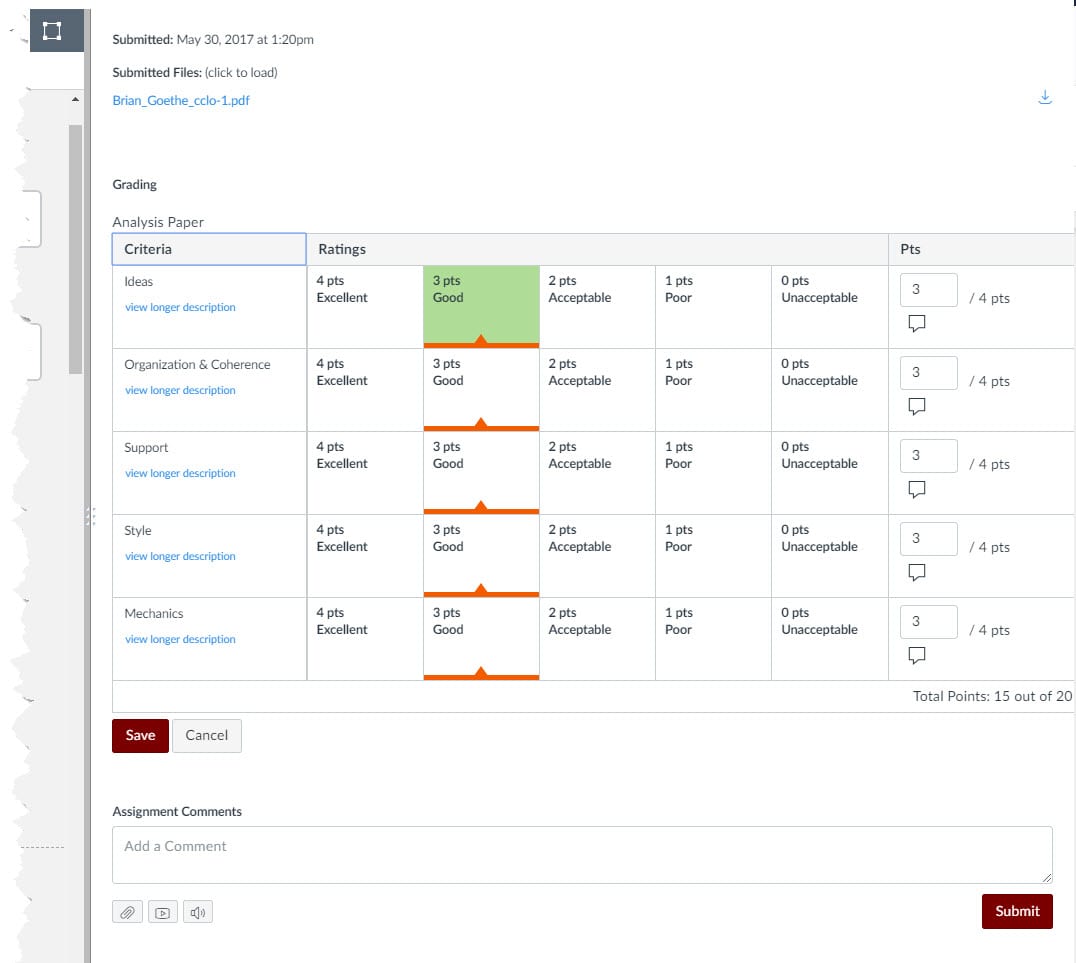What are rubrics? Why use them?
Rubrics specify the qualities or processes that must be exhibited in order for a given piece of work to be assigned a particular evaluative rating (Peter McDaniel, Understanding Educational Measurement). They provide a guide for both instructors and learners as to how “what learners do” in course will be assessed and/or graded. Rubrics can be used to assess almost any type of assignments, including essays, final projects, oral presentations, in-class and online discussion, artwork and performances.
Laying out a set of clear goals and criteria for assessment in a rubric is useful because:
- When distributed together with the assignment description, rubrics help students understand the specific requirements and acceptable performance standards. This allows students to monitor and assess their own progress.
- Rubrics can reduce the time spent grading by reducing uncertainty and by allowing instructors to refer to the rubric description associated with a score rather than having to write long comments.
- Grading according to an explicit and descriptive set of criteria that is designed to reflect the weighted importance of the objectives of the assignment helps ensure that the instructor’s grading standards are consistent.
- A set of clear goals and criteria helps instructors get a clearer picture of the strengths and weaknesses of their class.
LMS-Integrated Rubric Tools

Example of a Canvas Rubric
Canvas, the University’s learning management system, provides a built-in electronic rubrics tool. The advantage of an LMS-integrated rubrics tool is that it streamlines the creation, distribution, and grading workflow of rubrics.
- You can create a set of rubrics for one assignment, and then modify and reuse them for subsequent assignments in the same class or other classes easily.
- You can view the rubrics side by side with your students’ work and grade directly according to your rubrics.
- You can provide private feedback to each student on each set of criteria in addition to providing overall comments.
If you would like help using rubrics in Canvas, read Canvas’ online documentation or contact us.
Resources:
- A Rubric for Rubrics, from the Teaching, Learning, and Technology Group. A tool for assessing the quality and use of rubrics in education.
- Grading and Performance Rubrics, from Carnegie Mellon, Eberly Center Teaching Excellence & Educational Innovation. A good description of rubrics and why they are a good assessment tool. Includes examples for different types of assignments.
- Assessment Resources: Sample Rubrics, from Association for the Assessment of Learning in Higher Education. A repository of about 100 sample rubrics for a wide range of assignments in higher education.
- Designing Effective Writing Assignments, University of Chicago, Chicago Center for Teaching. Discusses how to come up with learning goals and assessment criteria for writing assignments.
- Rubrics, University of California—Berkeley Center for Teaching and Learning. Includes a guide on how to get started with rubrics.

